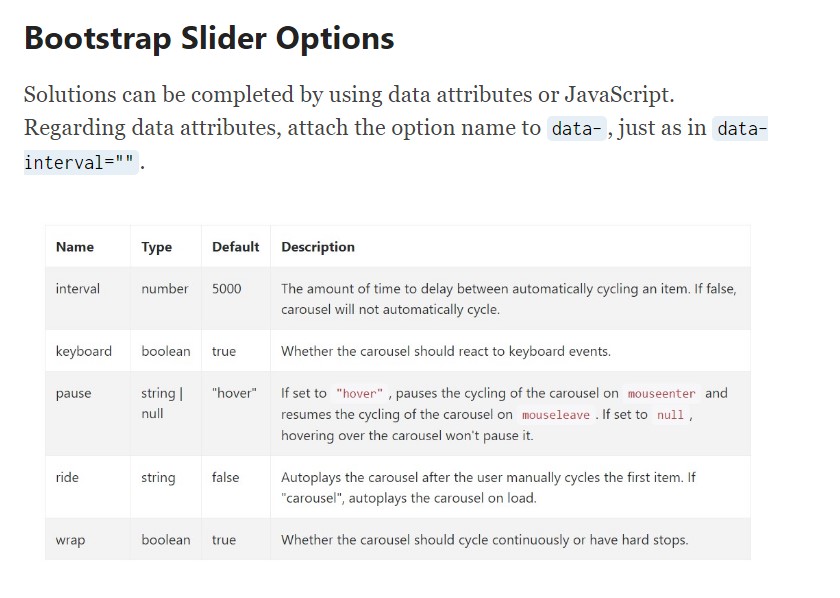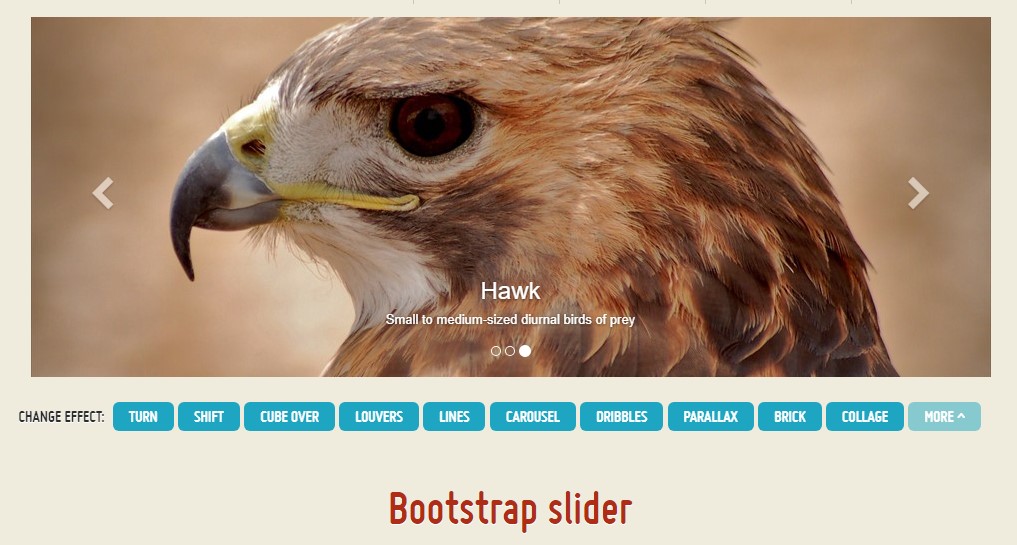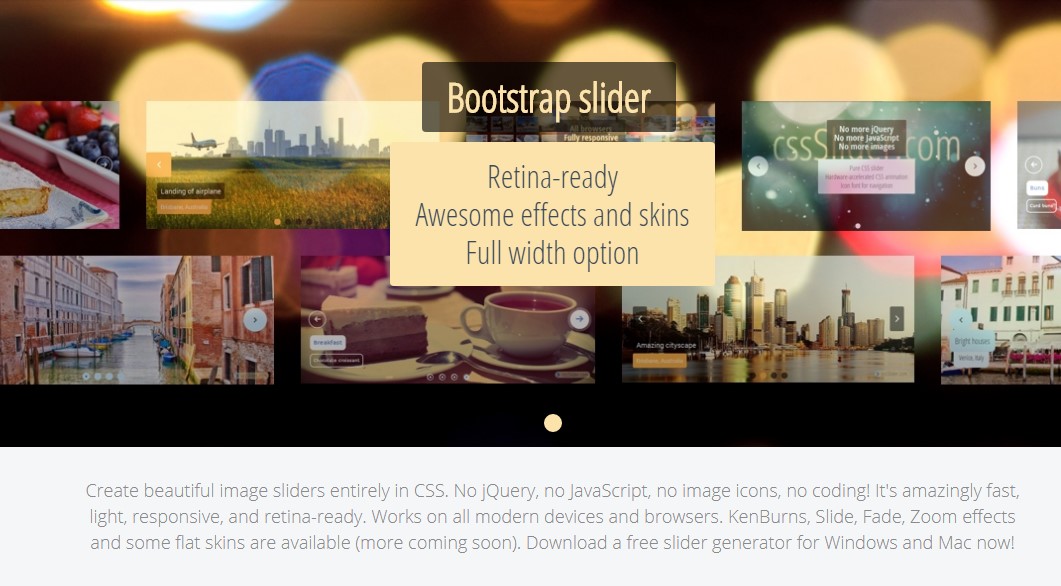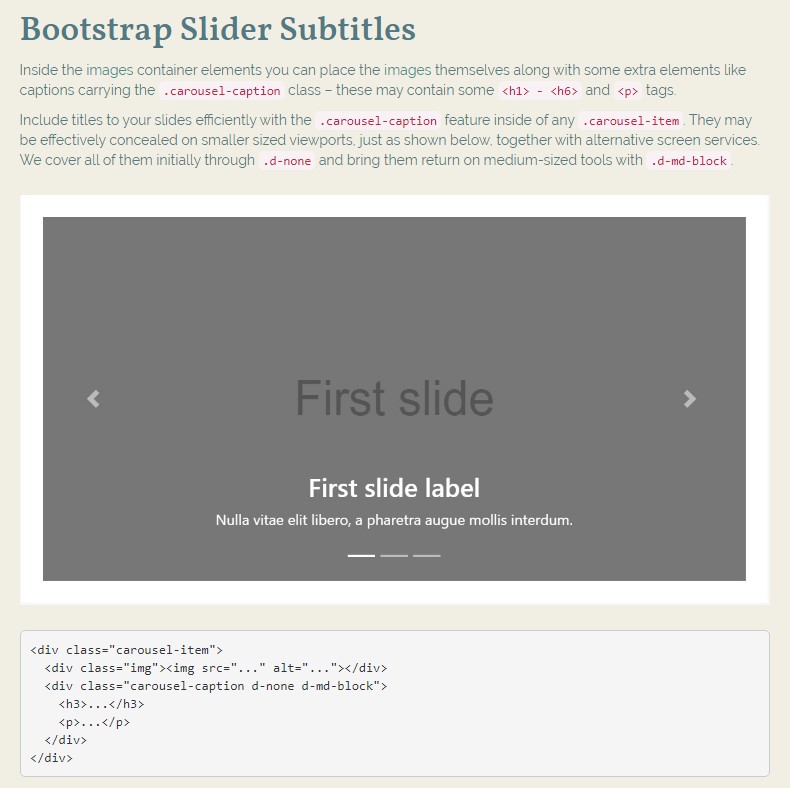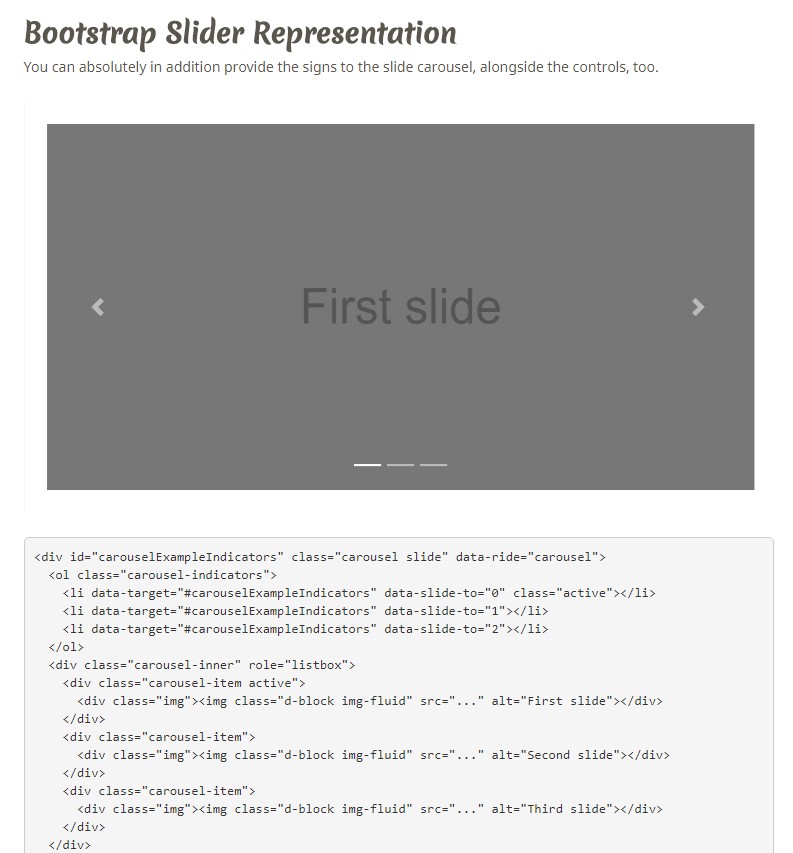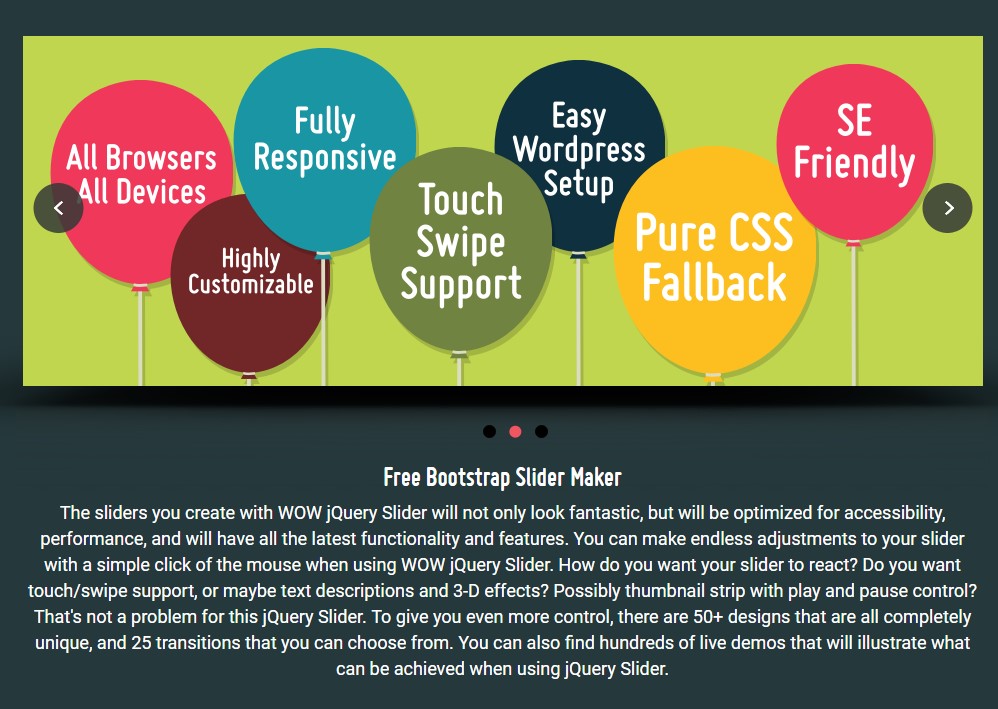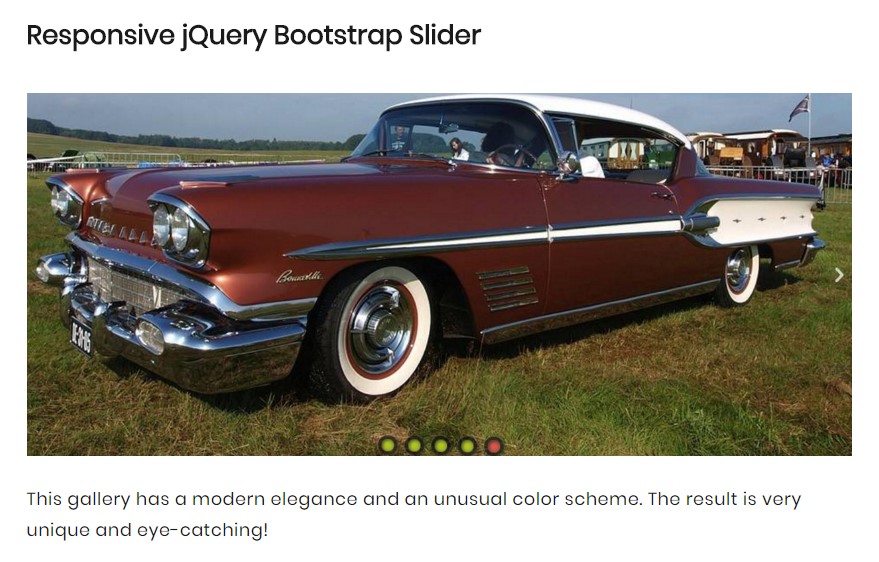Bootstrap Slider Working
Intro
Motion is the most awesome thing-- it obtains our focus and manages to keep us evolved at least for a while. For how long-- well all of it accordings to what's certainly flowing-- supposing that it is simply something attractive and awesome we watch it even longer, in the case that it is really boring and monotone-- well, there really usually is the close tab button. So in the event that you assume you possess some awesome web content available and want it incorporated in your pages the image slider is commonly the one you first think about. This element turned actually so famous in the most recent few years so the web essentially go drowned along with sliders-- just browse around and you'll find out almost every second webpage starts with one. That is actually exactly why current web design directions concerns present a growing number of designers are really aiming to removed and replace the sliders with various other expression means just to add a little more charm to their webpages.
Possibly the golden ration is buried someplace between-- just like applying the slider component yet not actually with the good old completing the entire element area pictures however probably some with opaque areas to get them it such as a particular components and not the whole background of the slider moves-- the selection is wholly right up to you and certainly is varied for every project.
In any case-- the slider component continues being the easy and highly helpful alternative anytime it involves bring in some moving pictures accompanied with strong message and invite to action buttons to your pages.
How to use Bootstrap Slider Menu:
The image slider is a component of the principal Bootstrap 4 system and is totally supported by both the style sheet and the JavaScript files of the most recent version of still the most prominent responsive framework around. Every time we talk about illustration sliders in Bootstrap we really take up the element such as Carousel-- which is clearly the exact thing simply with a different name.
Building a carousel element using Bootstrap is pretty convenient-- all you should do is comply with a straightforward structure-- to start cover the whole thing inside a <div> along with the classes .carousel and .slide - the second one is optional describing the subtle sliding transition in between the images instead if simply just jumpy transforming them right after a few seconds. You'll in addition need to designate the data-ride = “carousel” to this in the event that you wish it to auto play on web page load. The default timeout is 5s or 5000ms-- if that is really way too slowly or very fast for you-- correct it by the data-interval=” ~ some value in milliseconds here ~ “ attribute assigned to the major .carousel element. This should also have an unique id = “” attribute defined.
Carousel signs-- these particular are the small features displaying you the placement each illustrations gets in the Bootstrap Slider Template-- you have the ability to likewise click on them to jump to a particular appearance. If you want to incorporate signs component make an ordered list <ol> specifying it the .carousel-indicators class. The <li> elements within it should provide two data- attributes selected like data-target=” ~ the ID of the main carousel element ~ ” and data-slide-to = “ ~ the desired slide index number ~ “ Important point to note here is the initial image from the ones we'll incorporate in just a moment has the index of 0 but not 1 as if expected.
Some example
You may as well put in the indicators to the carousel, alongside the controls, too.
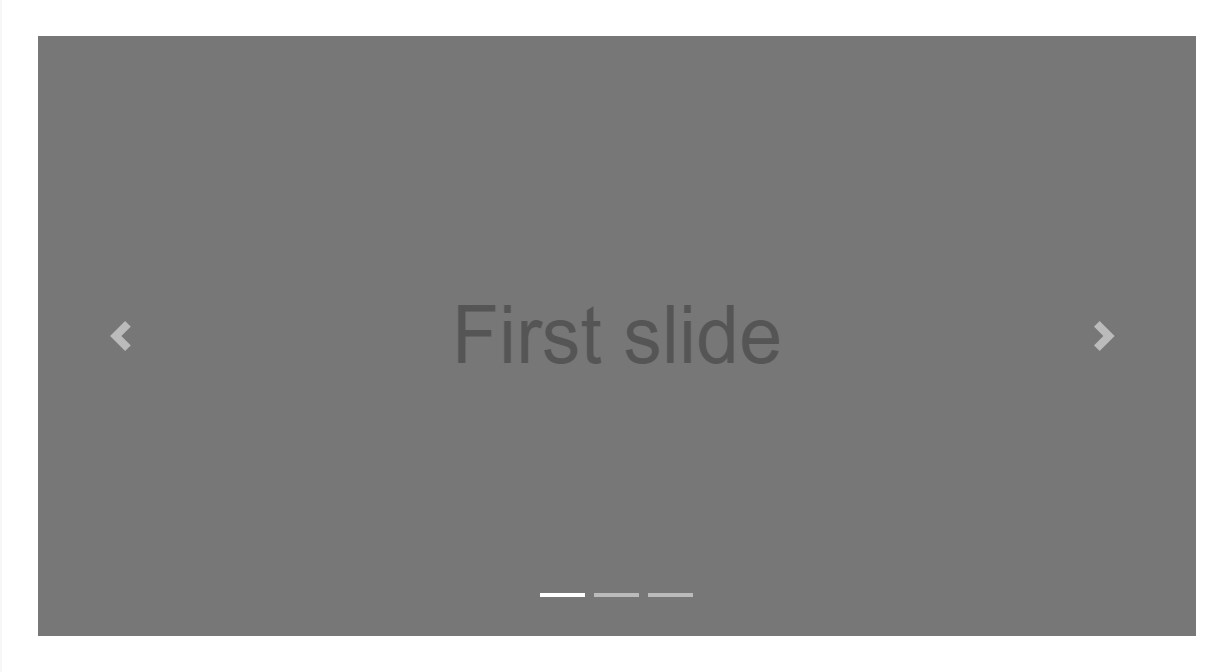
<div id="carouselExampleIndicators" class="carousel slide" data-ride="carousel">
<ol class="carousel-indicators">
<li data-target="#carouselExampleIndicators" data-slide-to="0" class="active"></li>
<li data-target="#carouselExampleIndicators" data-slide-to="1"></li>
<li data-target="#carouselExampleIndicators" data-slide-to="2"></li>
</ol>
<div class="carousel-inner" role="listbox">
<div class="carousel-item active">
<div class="img"><img class="d-block img-fluid" src="..." alt="First slide"></div>
</div>
<div class="carousel-item">
<div class="img"><img class="d-block img-fluid" src="..." alt="Second slide"></div>
</div>
<div class="carousel-item">
<div class="img"><img class="d-block img-fluid" src="..." alt="Third slide"></div>
</div>
</div>
<a class="carousel-control-prev" href="#carouselExampleIndicators" role="button" data-slide="prev">
<span class="carousel-control-prev-icon" aria-hidden="true"></span>
<span class="sr-only">Previous</span>
</a>
<a class="carousel-control-next" href="#carouselExampleIndicators" role="button" data-slide="next">
<span class="carousel-control-next-icon" aria-hidden="true"></span>
<span class="sr-only">Next</span>
</a>
</div>Primary active element desired
The .active class requires to be included in one of the slides. Otherwise, the carousel will certainly not be viewable.
Images container-- this one particular is a ordinary <div> element along with the .carousel-inner class delegated to it. Within this container we are able to start putting the particular slides in <div> elements each one of them featuring the .carousel item class applied. This one particular is new for Bootstrap 4-- the old framework worked with the .item class for this purpose. Essential thing to consider here in addition to in the carousel indicators is the initial slide and indicator that by the way need to also be associated to each other additionally bringing the .active class since they are going to be the ones being displayed upon web page load.
Inscriptions
Inside the images container elements you can place the images themselves along with some extra elements like captions carrying the .carousel-caption class – these may contain some <h1> - <h6> and <p> tags.
Include titles to your slides quickly using the .carousel-caption element inside any .carousel-item. They can certainly be simply hidden on small viewports, like revealed here, having extra display utilities. We cover all of them first using .d-none and bring them return on medium-sized tools by using .d-md-block.

<div class="carousel-item">
<div class="img"><img src="..." alt="..."></div>
<div class="carousel-caption d-none d-md-block">
<h3>...</h3>
<p>...</p>
</div>
</div>Finally within the main .carousel element we have to additionally made some markup developing the indicators on the parts of the slider helping the site visitor to search around the images presented. These along utilizing the carousel guides are certainly not required and can possibly be omitted.But if ever you choose to provide such exactly what you'll need is two <a> tags both equally carrying .carousel-control class and everyone - .left and data-ride = “previous” or .right and data-ride = “next” classes and attributed specified. They must likewise have the href attribute indicating the major carousel wrapper like href= “~MyCarousel-ID“. It is actually a great idea to additionally include some form of an icon in a <span> so the individual actually gets to view them since so far they will appear just as opaque components over the Bootstrap Slider Bar.
Events
Bootstrap's slide carousel class reveals two events for connecteding into carousel useful functionality. Both occasions have the following supplemental properties:
- direction: The direction where the slide carousel is sliding (either "left" as well as "right").
- relatedTarget: The DOM component that is being certainly moved into place as the active object.
All of the slide carousel events are set off at the slide carousel in itself (i.e. at the <div class="carousel">).

$('#myCarousel').on('slide.bs.carousel', function ()
// do something…
)Conclusions
Basically that is simply the system an image slider (or carousel) should have by using the Bootstrap 4 framework. Right now everything you desire to do is consider a number of pleasing pictures and message to place in it.
Check out several video clip short training regarding Bootstrap slider:
Related topics:
Bootstrap slider official documentation
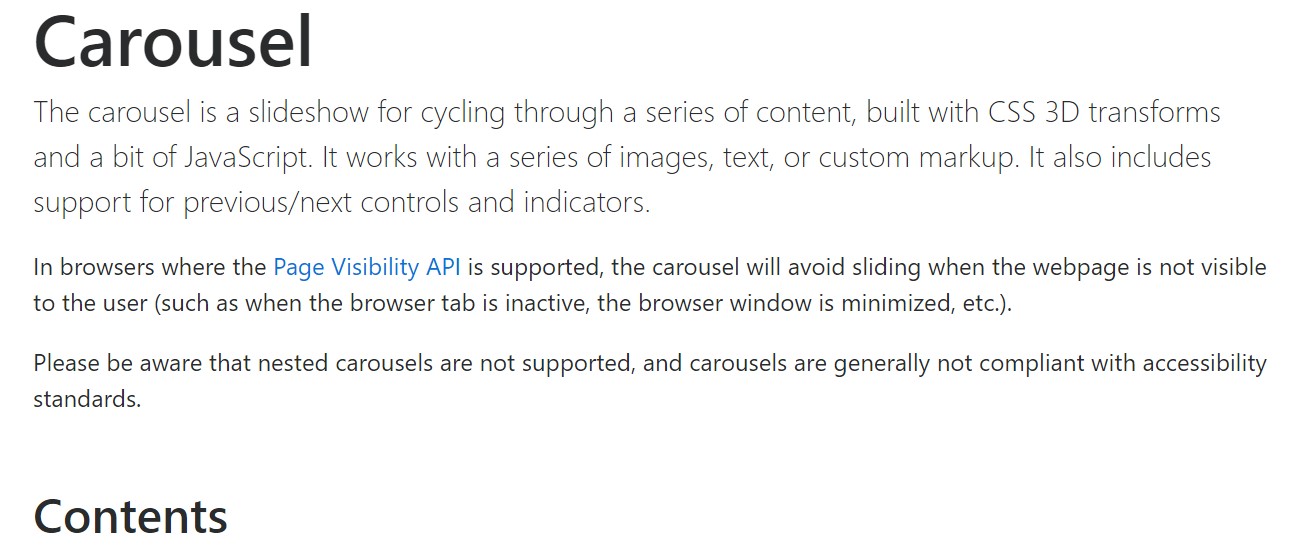
Bootstrap slider information
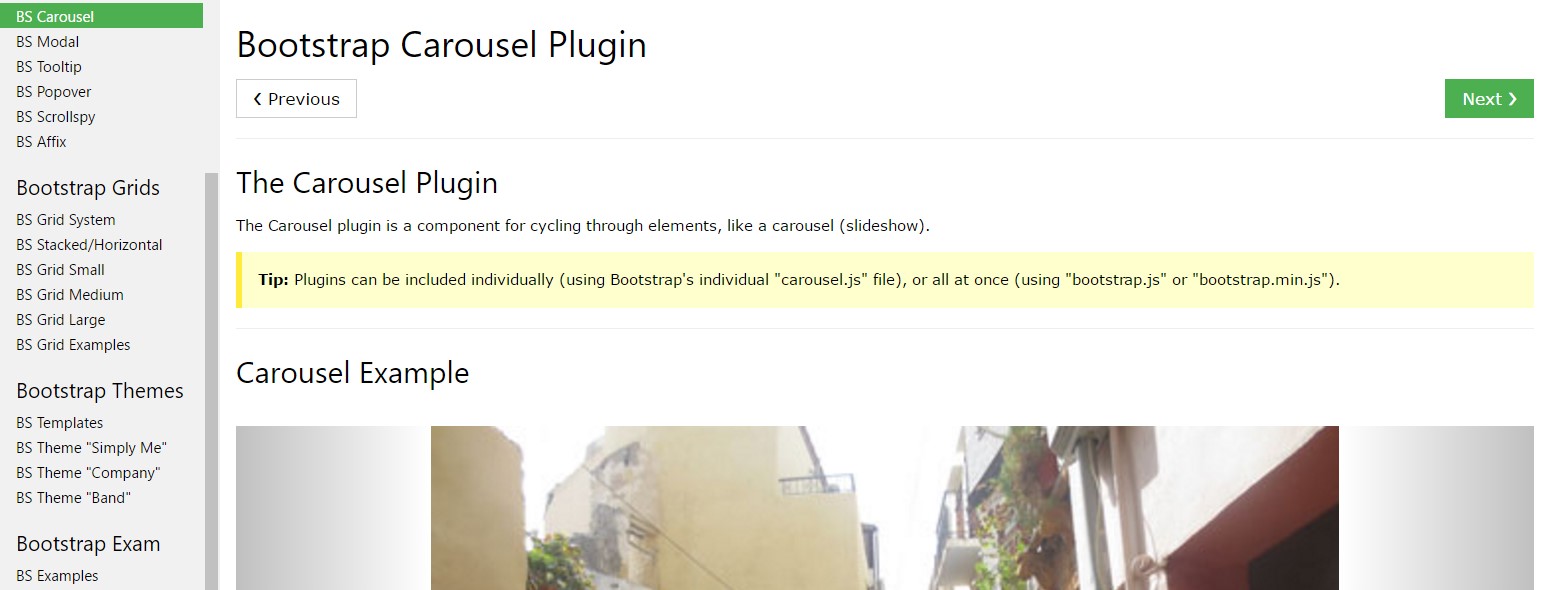
Why don't we check out AMP project and AMP-carousel element
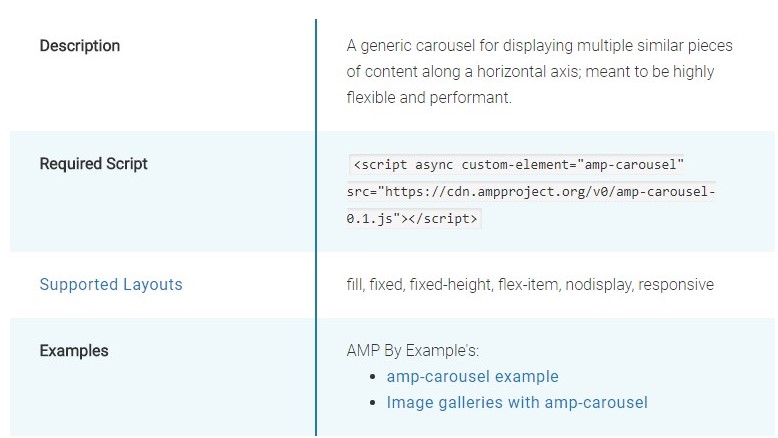
jQuery Bootstrap 4 Slider with Autoplay
CSS Bootstrap Slider Slide
Bootstrap Slider with Options
CSS Bootstrap 4 Slider Template
Responsive Bootstrap 4 Slider Slideshow
HTML Bootstrap Slider Examples
Responsive Bootstrap Slider Slide
